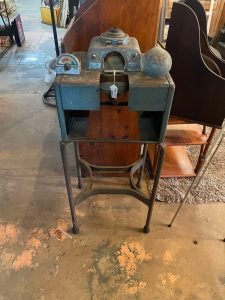
Asbestos was once considered a miracle material in the construction industry due to its strength, insulation properties, and resistance to fire. However, it is now widely recognized as a serious health hazard. Buildings constructed before the year 2000 may still contain asbestos-containing materials (ACMs), and identifying them is essential to safeguard health and comply with legal obligations. A complete asbestos survey is a detailed inspection designed to identify potential material risks within a property.
What a Complete Asbestos Survey Involves
A complete asbestos survey goes beyond a simple visual check. It includes the identification, sampling, and analysis of materials suspected to contain asbestos. Experienced surveyors examine various parts of a building, including walls, ceilings, floors, insulation, pipe lagging, and roof materials. When a potential ACM is found, a small sample is collected and sent to a certified laboratory for analysis.
The aim of this survey is to determine whether asbestos is present, where it is located, the type of asbestos, and its current condition. This information is compiled into a detailed report that helps property owners or managers make informed decisions about how to handle the risks.
Types of Surveys and Their Purpose
There are generally two types of asbestos surveys, and a complete survey can include elements of both depending on the situation. A Management Survey is used to assess the condition of ACMs during the normal occupation and use of a building. This helps ensure that materials are maintained in a safe state or are properly managed to prevent exposure.
A Refurbishment and Demolition Survey is required before any structural changes, refurbishment, or demolition work begins. This survey is more intrusive and is intended to locate all asbestos materials that could be disturbed during construction work. It ensures that workers and occupants are protected from accidental exposure.
Identifying Material Risks in Various Settings
Whether in a residential home, office, factory, or public building, undetected asbestos poses significant health and legal risks. Inhalation of asbestos fibers can lead to serious diseases such as mesothelioma, asbestosis, and lung cancer. These diseases often develop years after exposure, making early detection critical.
In residential settings, asbestos can be found in textured coatings, pipe insulation, floor tiles, and garage roofs. In commercial or industrial buildings, it might be present in fireproofing materials, cladding, insulation boards, or sprayed coatings. A complete survey ensures that no potential risk goes unnoticed.
Why Professional Surveys Are Essential
Only trained and licensed professionals should carry out asbestos surveys. They have the expertise, equipment, and knowledge to conduct thorough inspections while minimizing the disturbance of materials. Their reports provide actionable guidance on whether asbestos should be managed in place or safely removed by specialists.
Moreover, compliance with local regulations often requires documentation proving that a property has been properly surveyed and assessed for asbestos risks. This is especially important during property sales, leasing, or major renovation projects.
Conclusion
A complete asbestos survey is vital for identifying hidden risks in both residential and commercial properties. It helps protect the health of occupants and workers while ensuring legal compliance. By locating and assessing asbestos-containing materials, property owners can make informed choices to manage or eliminate hazards effectively. A detailed, professional survey is the foundation for maintaining a safe and secure environment.



